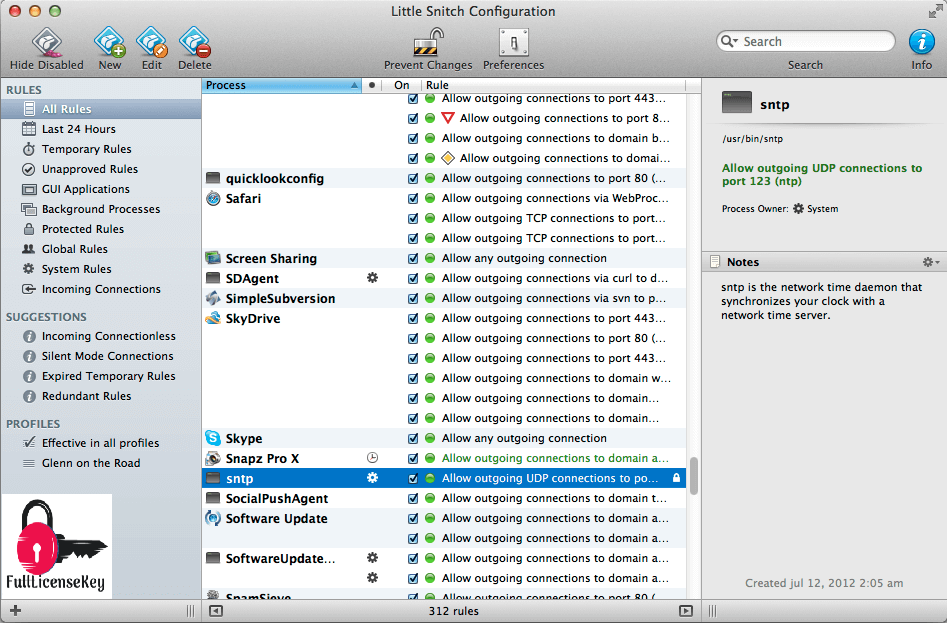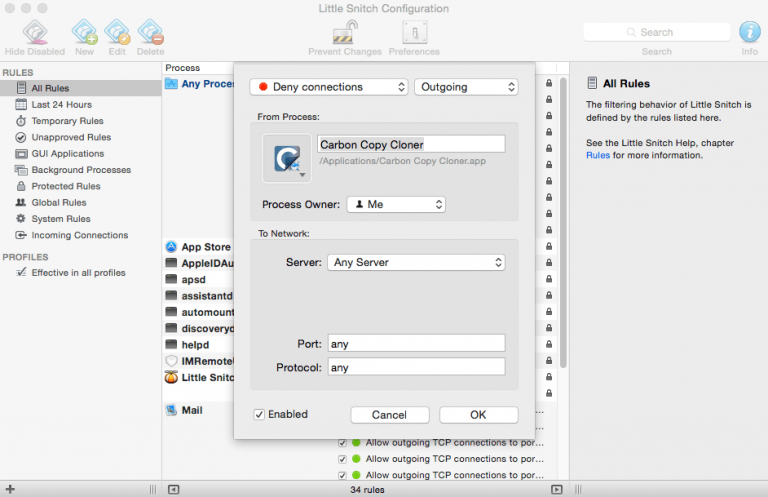
Enabling it likely causes more problems and confusion for less-experienced users than leaving it off, but a Mac with unfettered bidirectional access isn’t a good thing, either. The firewall option in the Security Privacy system preference pane is extremely coarse and lacks necessary features. (See man tcpdump for a description of the options. Just run the following command from Terminal app. At the very top, you can control if you want to block or allow incoming or outgoing connections. Thus, before Little Snitch can perform deep packet inspection, the IP address of your Mac may have already been sent to the remote server You can test the Little Snitch IP address leak yourself.

It’s bizarre that this many decades into the net’s evolution, Apple still doesn’t include strong tools enabled by default that restrict access to your Mac or examine connections from macOS or apps you’re running out to the Internet. To do this, open Little Snitch and select New Rule. But the app has significant updates for visualizing connections and improves how it explains what apps are trying to do.

Version 4 refines and extends this friendly firewall, and if you’ve used it or looked at it in the past, you’ll find it mostly familiar. The Internet is a terrifying place, and Objective Development’s Little Snitch 4 ($45) has tried for many years to help keep your Mac locked down by monitoring connections and letting you control inbound and outbound traffic.


 0 kommentar(er)
0 kommentar(er)
